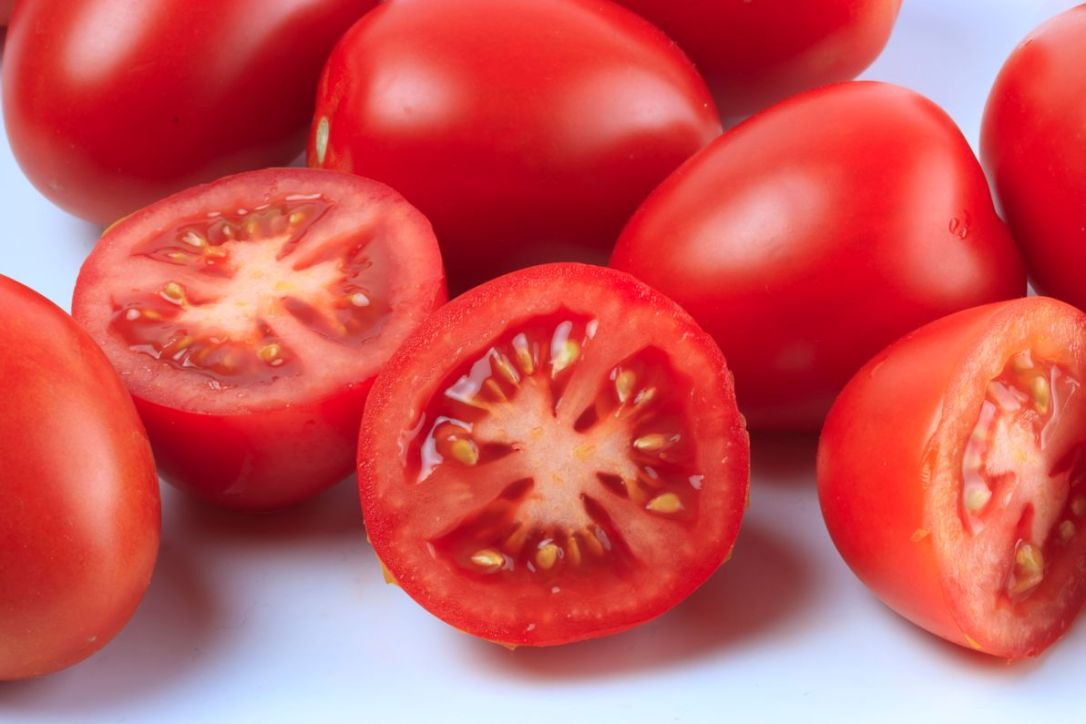 One of the great things about living in this part of the country in the summer is the tomatoes.
One of the great things about living in this part of the country in the summer is the tomatoes.
Right now, the Hickory and Conover Farmer’s Markets still have local tomatoes plus from farther south. Whether it is the increased acid in a vine-ripened tomato or something peculiar to the soil in this area, most of us live on tomato and mayonnaise sandwiches for a good portion of the summer season. Likewise, summer is really the only time I prefer tomato and lettuce on a cheeseburger to slaw and chili. That’s because homegrown tomatoes are just better tasting.
Tomatoes are full of lycopene, a powerful antioxidant that neutralizes free radicals that cause damage to our cells. The body cannot make lycopene on its own, and although other fruits and vegetables contain lycopene, none have the amounts found in tomatoes. Lycopene is present in all tomatoes, whether they are green (unripe), red, orange or yellow and whether they are fresh, canned, or cooked. Tomatoes can act to protect us from cancer and heart disease.
Research has found that lycopene is especially good at preventing cancers of reproductive and digestive systems, including the prostate, cervix, mouth, esophagus, stomach, colon, and rectum. It also prevents cancer of the larynx, lung, and breast. In experiments, lycopene that was introduced into pre-existing cancer cell cultures prevented the cultures from growing.
Lycopene and other nutrients in tomatoes can also lower cholesterol and thus prevent heart disease. Drinking thirteen ounces of tomato juice a day lowered bad LDL levels by more than twelve percent in one study. Other studies show that ingesting tomatoes and tomato-based products reduces the risk of macular degenerative disease, fights liver toxicity, improves bone density, and dissolves gallstones. Furthermore, the American Medical Association says daily consumption of tomatoes decreases the oxidative stress in type 2 diabetes. A daily glass of tomato juice could keep a person healthy for life.
For more information on the health benefits of tomatoes, including a chart of all the nutrients contained in this amazing fruit, please go to The World’s Healthiest Foods.
Canning Tomatoes
Tomatoes are easy to can and don’t require a lot of expensive equipment. You will need a water bath canner (usually about $30), canning jars, rings, lids, a jar grabber, lid lifter (has a magnet on the end) and a jar funnel. Of course, you need tomatoes (about seven large to a quart), canning salt, lemon juice and water.
The first step is to wash and sterilize the jars, rings and lids. I understand some dishwashers have a sterilize setting, but I always boil the clean jars in the canner and the lids and rings in separate pots for at least ten minutes. This is very important. If these aren’t sterilized sufficiently, your whole batch of tomatoes will spoil. (And talk about a stink!) Leave the jars and lids in the hot water until you are ready to put the tomatoes into them.
While you are heating the jars, boil another large pot of water and prepare a pot or bucket of ice water. Wash your tomatoes, pull off the stems and put them in your stoppered sink. Don’t fill it too full. You can always repeat this step if you have a lot of tomatoes. Pour the boiling water over the tomatoes and after about 30-60 seconds, use tongs to pull out the sink stopper. (Don’t burn yourself!) Immediately pour ice water on top of the tomatoes. It will make the skins slide right off. Peel the tomatoes and cut out any bruised or diseased places.
Fill the jars to within ¼-inch of the top. Press the tomatoes down tight so the juice fills any air pockets. Use a spoon or fork to release any additional air pockets. Add 1 tsp. canning salt and 2 tbs. of lemon juice to each quart jar. Wipe the top of the jar and underside of the ring so they are clean and you get a good seal. Seal the lid on with the ring and boil in the water bath for 45-50 minutes. There needs to be about an inch of water over the tops of the jars in the canner.
Lift the jars out of the water and let them cool overnight without touching them. You’ll hear the lids “pop” as they seal. Once cooled, make sure all the lids are sealed by gently pressing the lid in the center. If it pops up and down, it is not sealed. You can refrigerate the jars that don’t seal and use the contents for a short time. Don’t replace the lid and reprocess the jar; there’s too much chance for botulism. It’s normal for the tomatoes to rise and float above a layer of liquid in the jars. Enjoy vine-ripened, canned tomatoes in all your favorite dishes all year long.
Making Homemade Salsa
Salsa is pretty easy to make. You can vary the ingredients, making it hotter or milder, as you prefer. At about 25 calories per ¼ cup serving, salsa is light, delicious, and good for you. Mix the following ingredients except for the cilantro and refrigerate. Top with the cilantro before serving. The recipe makes about 2 ½ cups.
2 c. tomatoes (some prefer them to be seeded)
¼ c. diced onion
½ tsp. minced garlic
¾ tsp ground cumin
2 tbs. lemon juice
1 jalapeño pepper, seeded and diced
1 banana pepper, seeded and diced
¼ cup diced green mango (optional)
Salt and pepper to taste
¼c. cilantro for garnish

